Med Imaging E2: skeletal pt 3 - LE
1/68
There's no tags or description
Looks like no tags are added yet.
Name | Mastery | Learn | Test | Matching | Spaced |
|---|
No study sessions yet.
69 Terms
when imaging extremities, remember to…
order multiple views
joint above and below
follow entire perimeter to ensure you see all fractures
what do plain films include for pelvis?
usually only AP view
What is the shape of the male pelvis?
triangular / android
what is the shape of the female pelvis?
rounded / ovoid
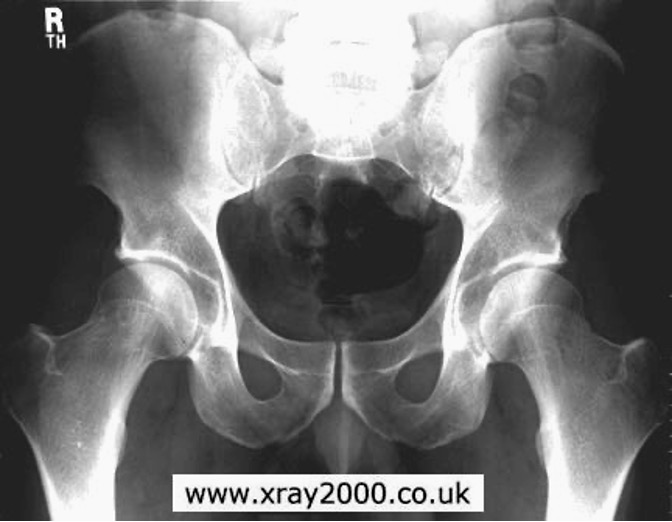
what gender pelvis is this?
male
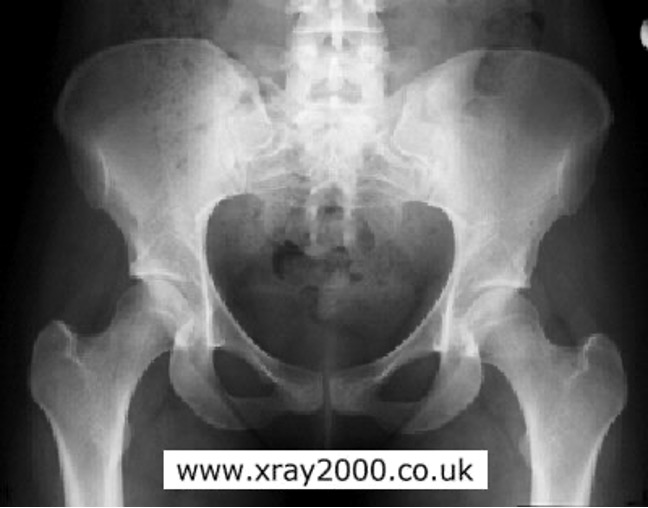
what gender pelvis is this?
female
what scans would you order for pelvic trauma?
AP view usually sufficient
CT scan is 2nd line
what is a widening of the symphysis pubis > 1cm considered?
abnormal → fracture / pelvic instability (observe SI joint for widening as well)
what do pelvic fractures cause?
hematomas, urethral and bladder injuries
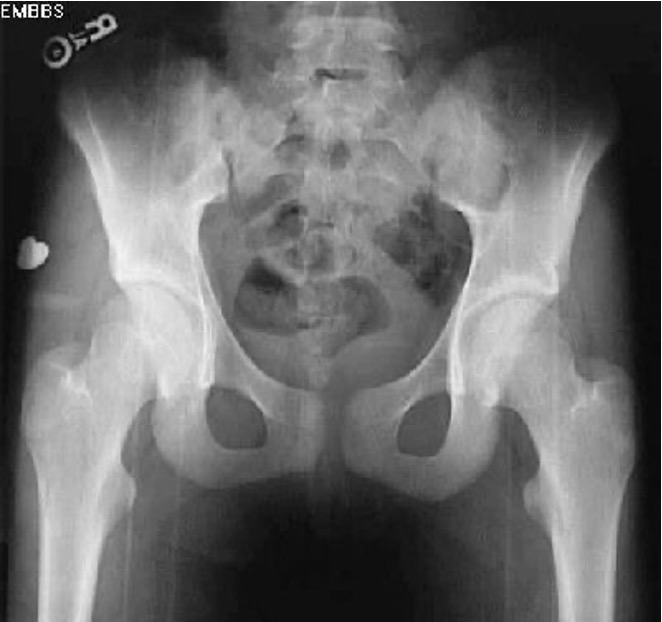
what is this?
diastases of symphysis pubis and SI joint
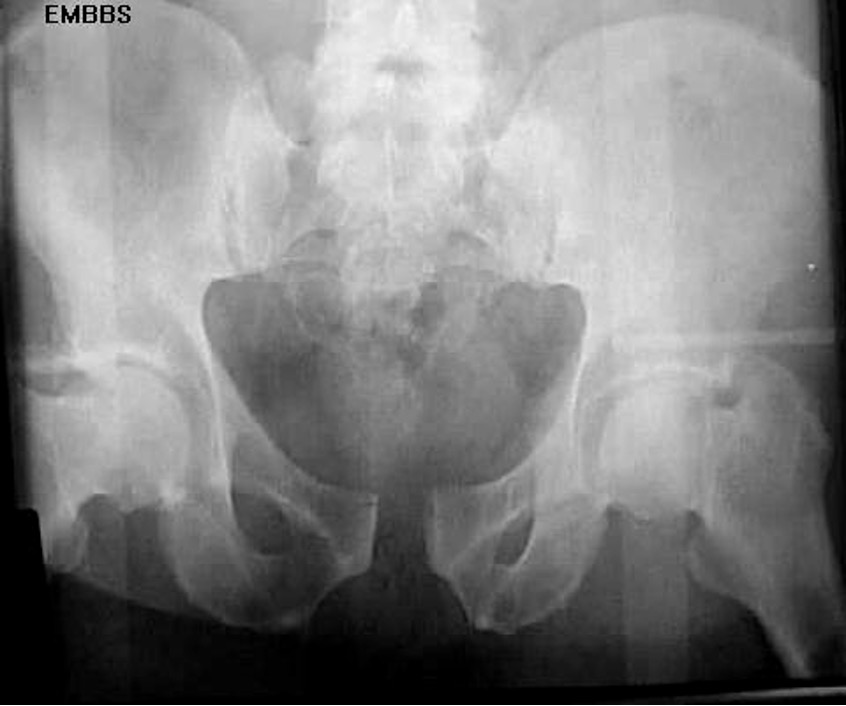
what is this?
widened pubic symphysis
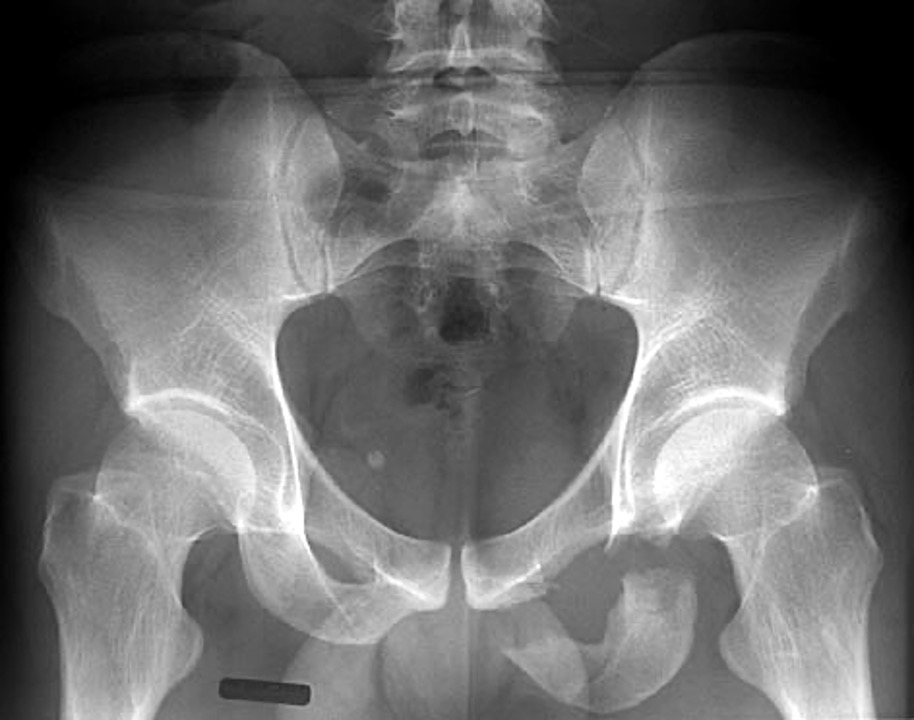
what is this?
left inferior pubic rami fx
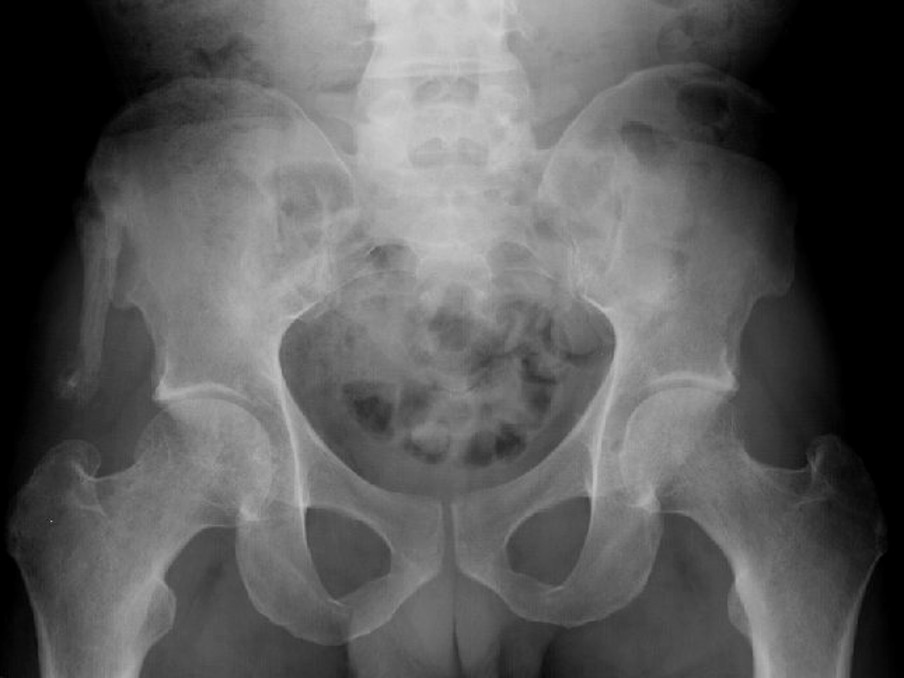
what is this?
avulsion fx of anterior superior iliac crest
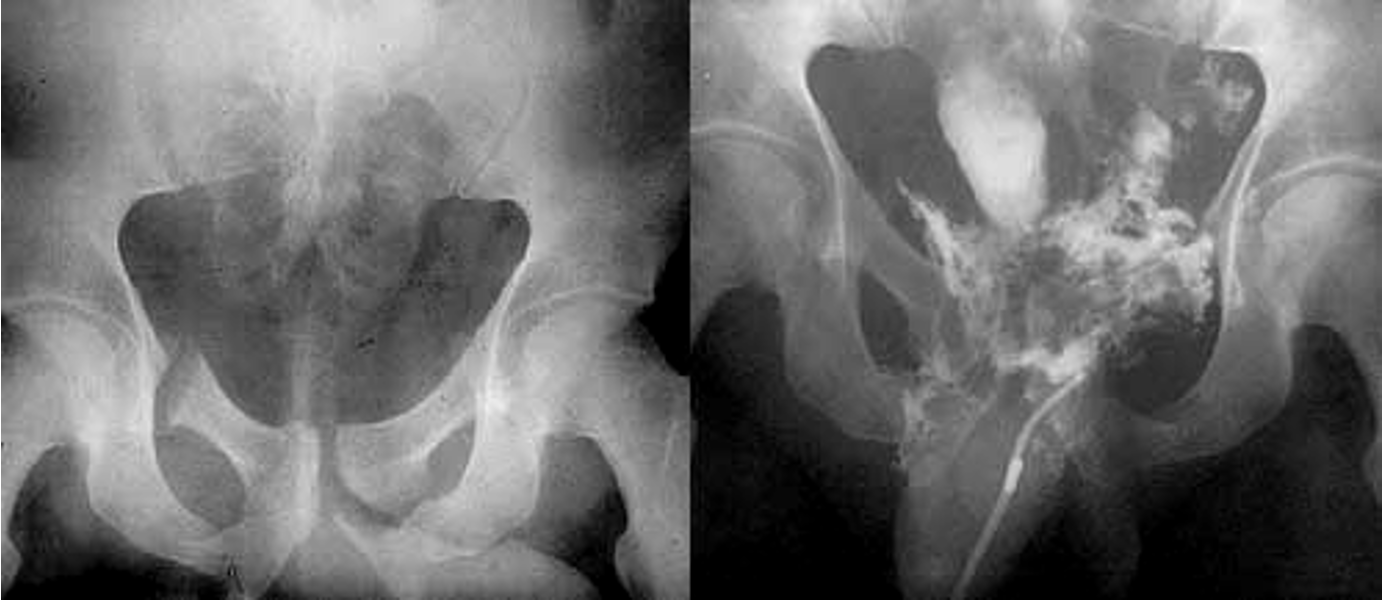
what is this?
severely fractured pelvis w/ ruptured bladder
what is flamingo view?
specialized orthopedic serious consisting of 3 separate pelvis projections- neutral, left foot raised, right foot raised
looks for instability of pelvic ring
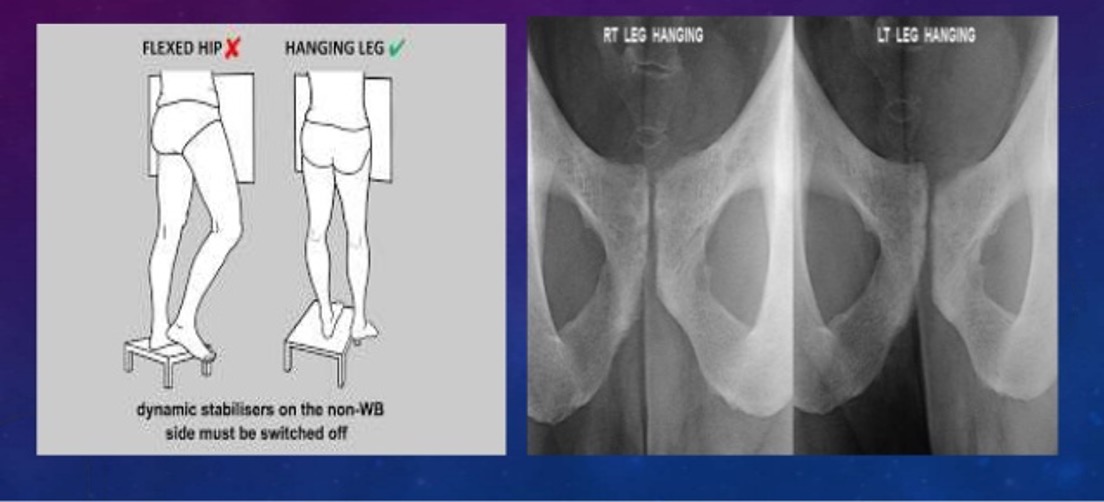
what does the Judea view of the pelvis evaluate?
posterior wall of acetabulum
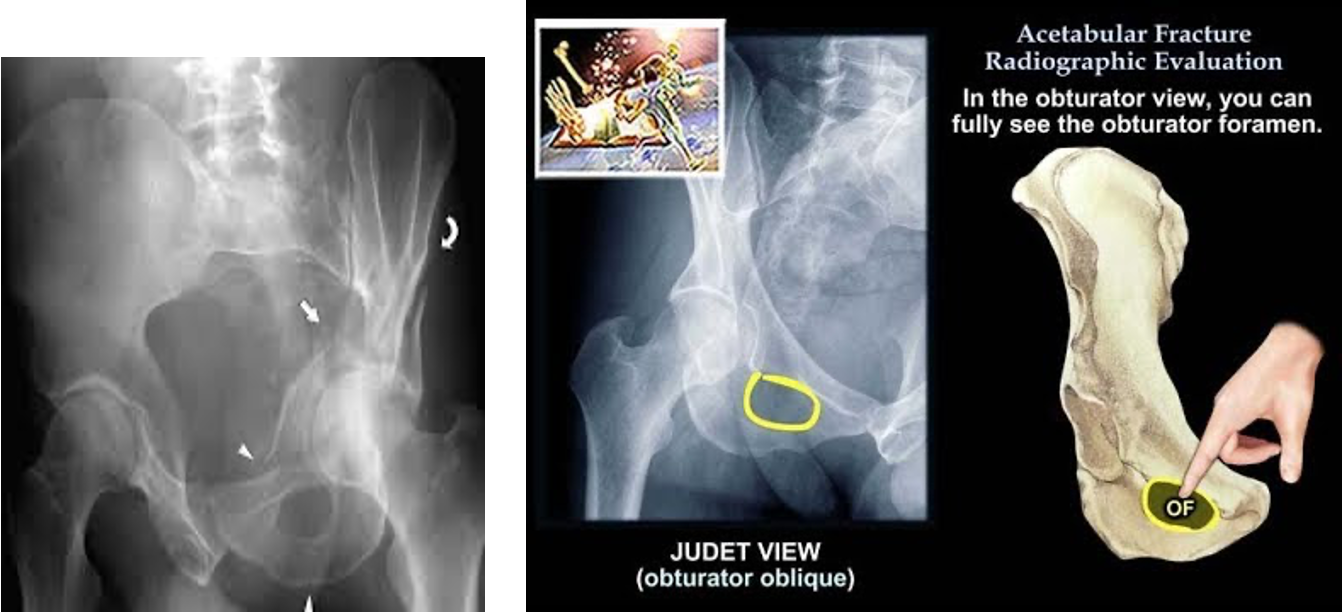
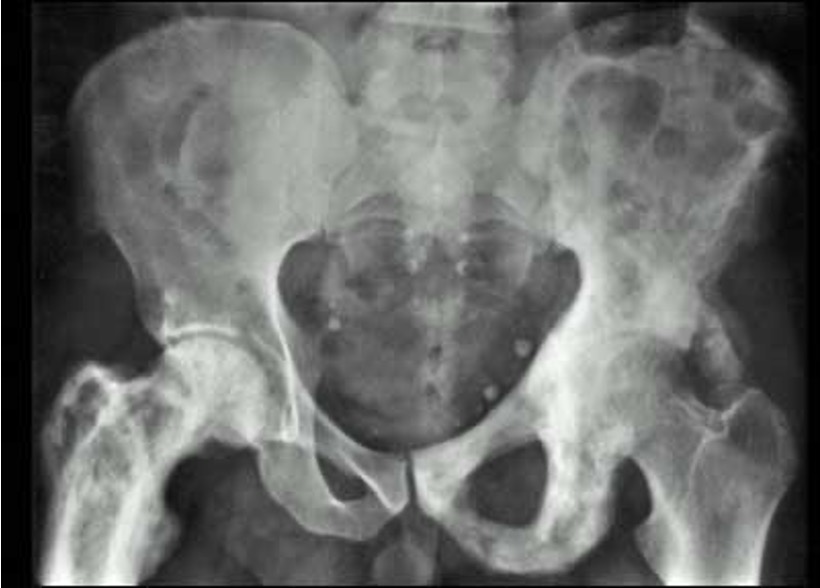
what is this?
pagets dz (benign lesion of pelvis)
inc sclerosis and enlargement of L hemisphere-pelvis and R hip
what is Ewings sarcoma?
malignant tumor in children
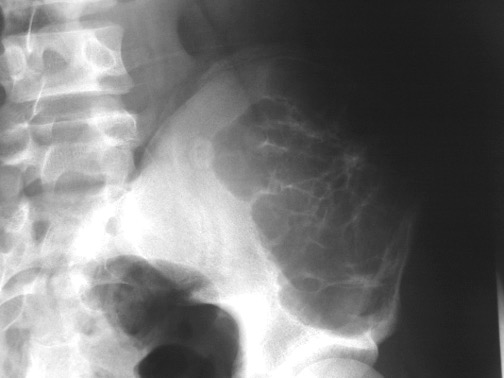
what is chondrosarcoma?
malignant tumor in adults
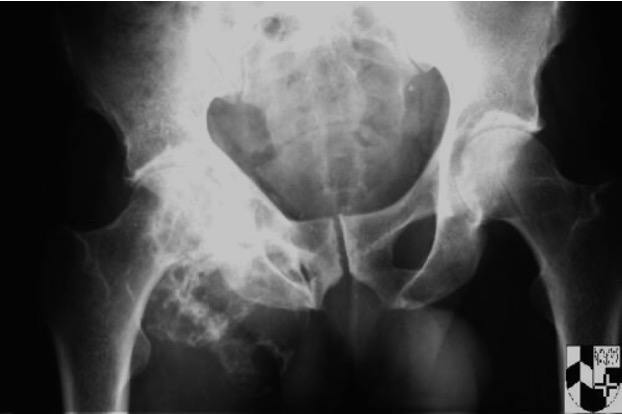
what is included in plain films of the hip?
AP view and frog leg view (abducted)
what are hip dislocations usually the result of?
MVAs
what is the most common hip dislocation?
posterior dislocation- displaced superiorly and laterally on film
how would an anterior hip dislocation appear?
inferiorly and medially
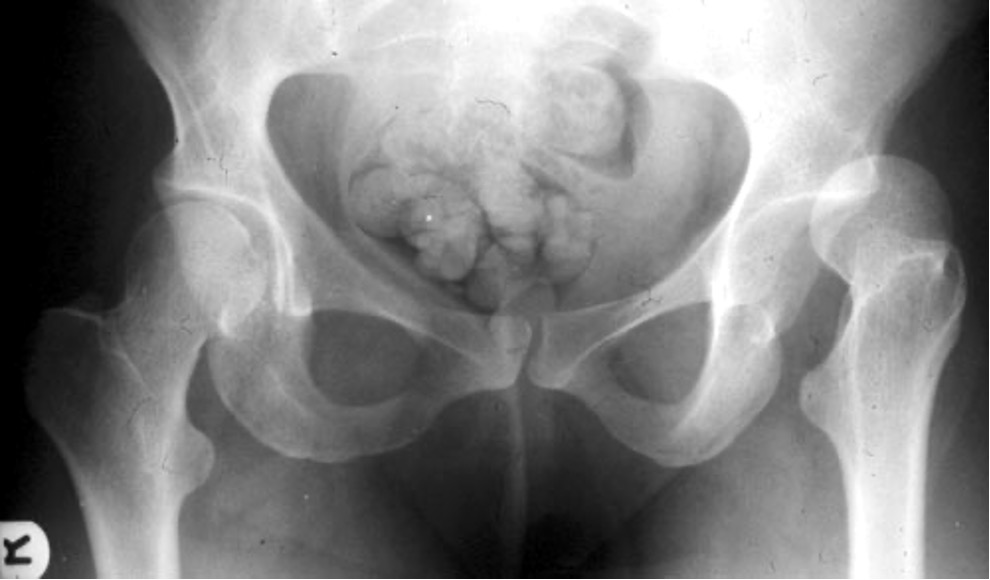
what is this?
posterior hip dislocation (superior and lateral to acetabulum)
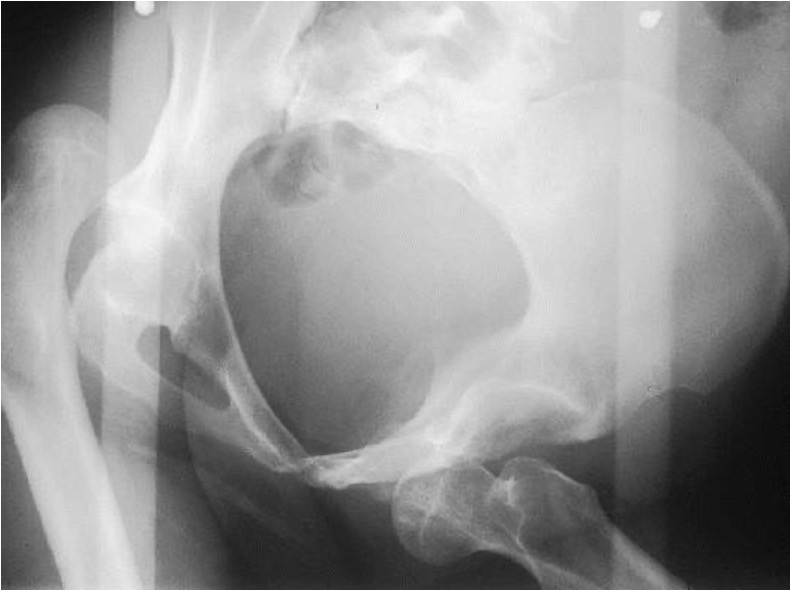
what is this?
R posterior hip dislocation
L anterior hip dislocation
(traumatic bilateral hip dislocation)
what are non displaced hip fx best evaluated by?
CT
what are the most common hip fractures?
femoral neck (90%) and intertrochanteric region
what are femoral neck fx often due to? How may they appear?
osteoporosis
stress fx may appear sclerotic
what are intertrochanteric region fx often due to? how may they appear?
trauma
shortened leg w/ internal rotation
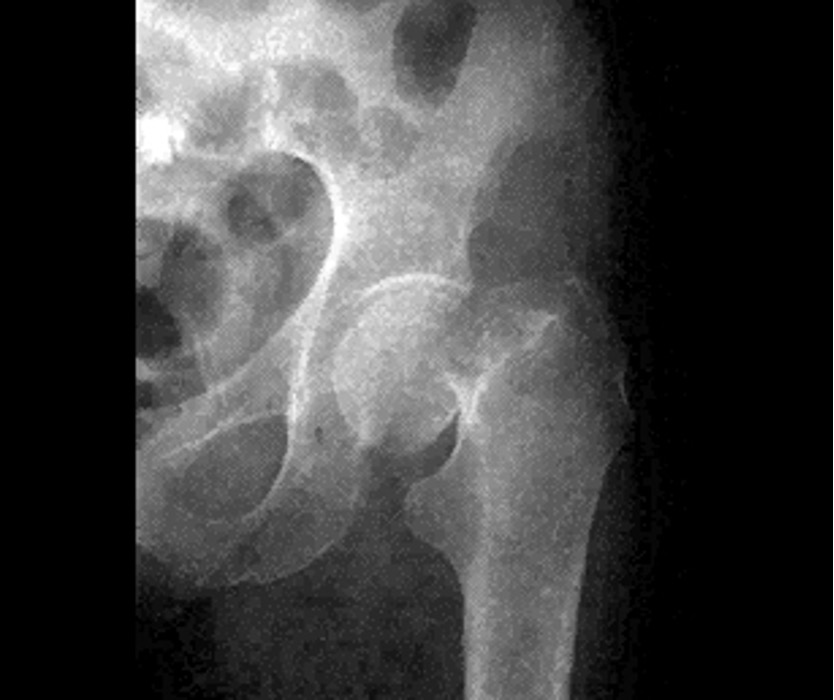
what is this?
femoral neck fx
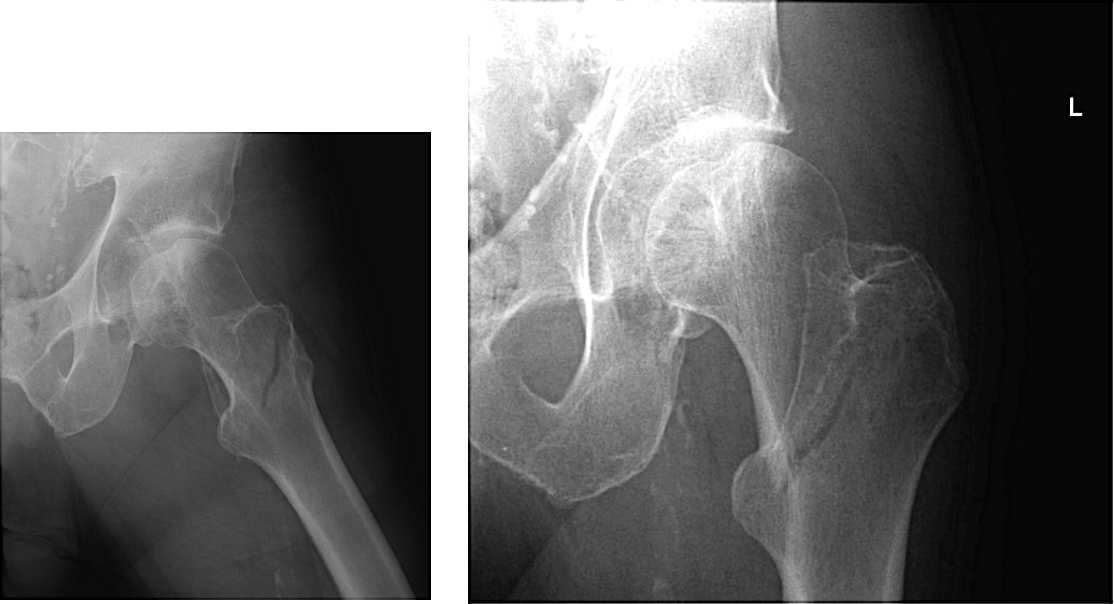
what is this?
intertrochanteric fx
what is the most common cause of chronic hip pain?
osteoporosis - pt presents w/ pain and loss of mobility, starting w/ internal rotation
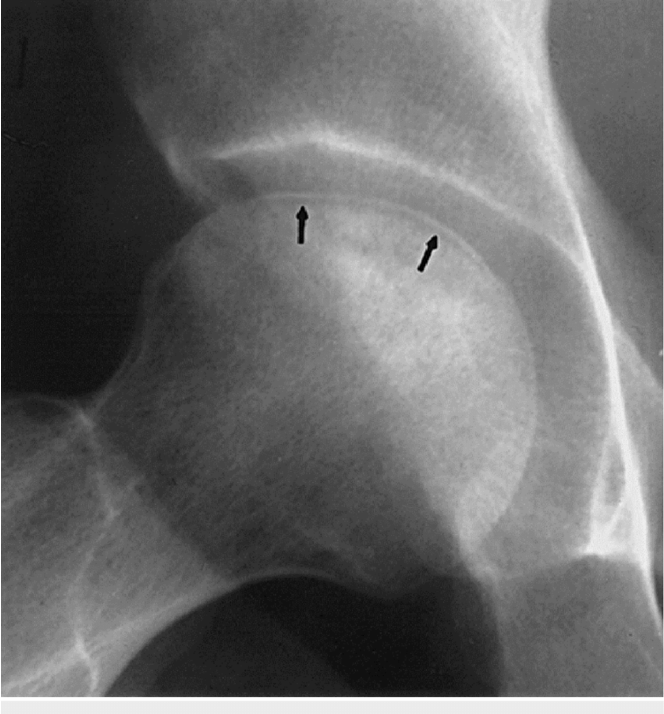
what is this?
avascular necrosis of hip
(subarticular lucency of femoral head → crescent sign)
what do plain films of the femur include?
AP and lateral
What is the femur prone to?
tumors
What can be evaluated on AP view of knee?
joint space narrowing or calcification of cartilage
what can be evaluated w/ lateral view of knee w/ partial flexion?
patella and joint effusions
what does sunrise or merchant view of knee show?
relationship of patella to anterior femur
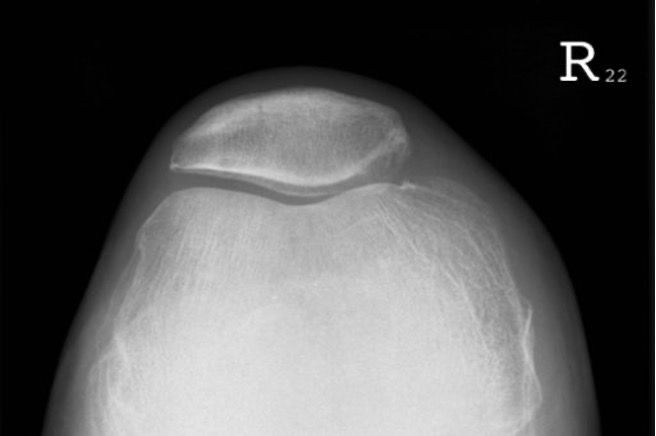
what does tunnel view of knee show?
tibial spines and femoral condyles
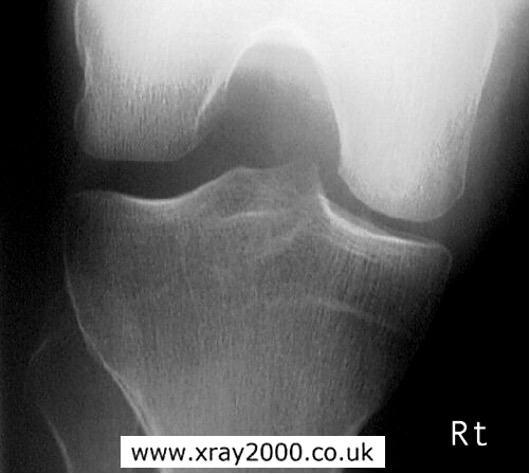
what is the best study for ligaments, cartilage, and tendons of the knee?
MRI
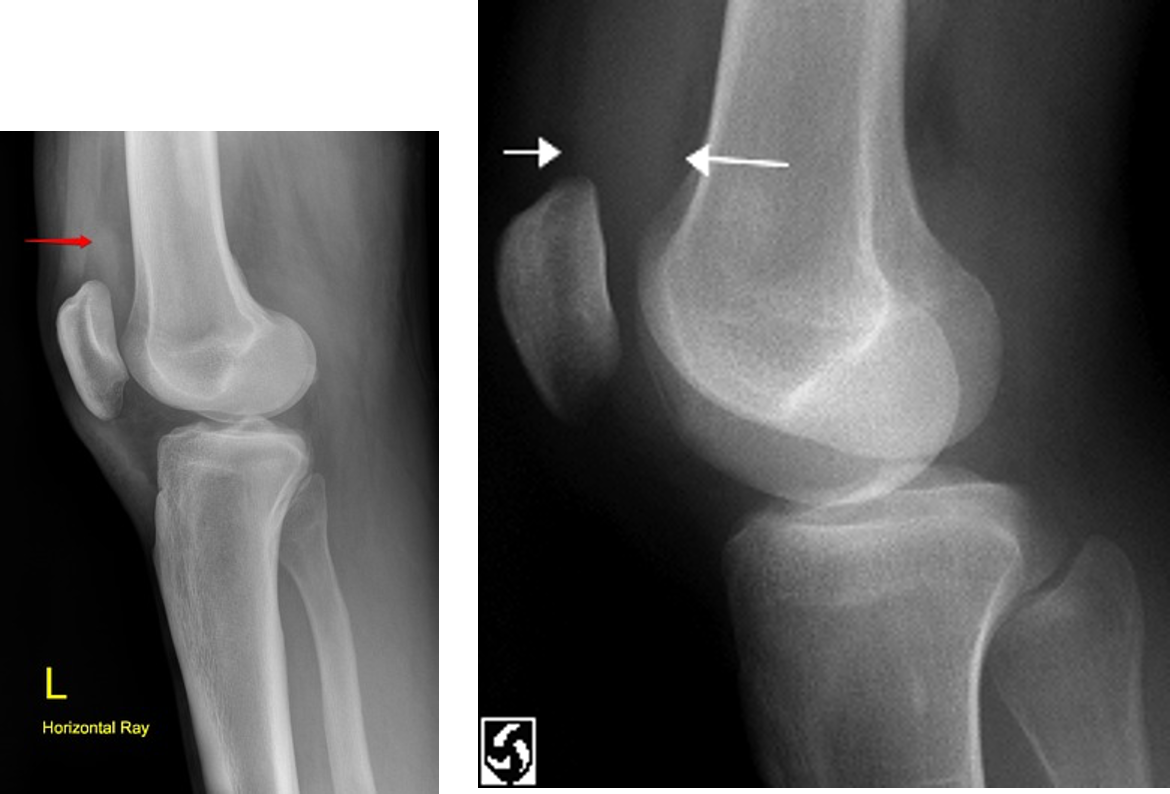
what is this?
knee effusion
(well defined rounded homogenous soft tissue density w/in supra patellar recess on lateral radiograph)
what are sx of osteoarthritis of the knee?
pain w/ motion, limited ROM, redness, swelling or visible deformity
What are XRAY findings of osteoarthritis of the knee?
joint space narrowing, sclerosis, osteophytes
what is chonedrocalcinosis?
calcification of articular cartilage
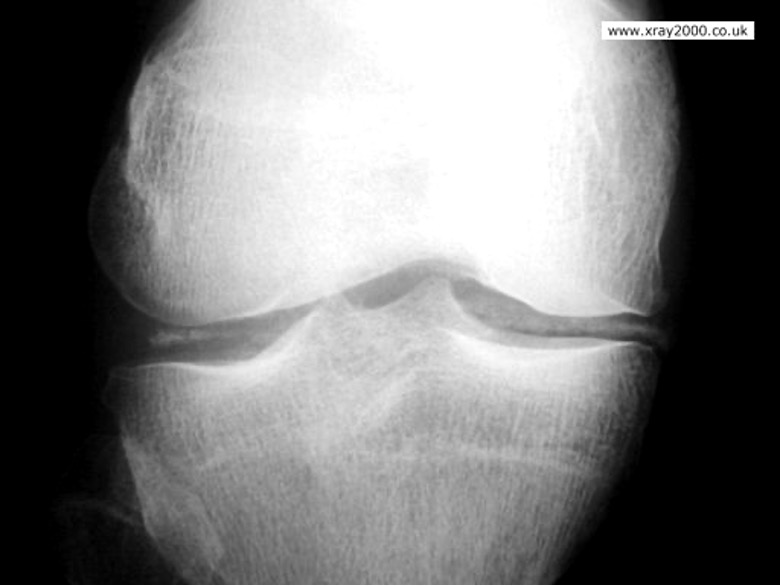
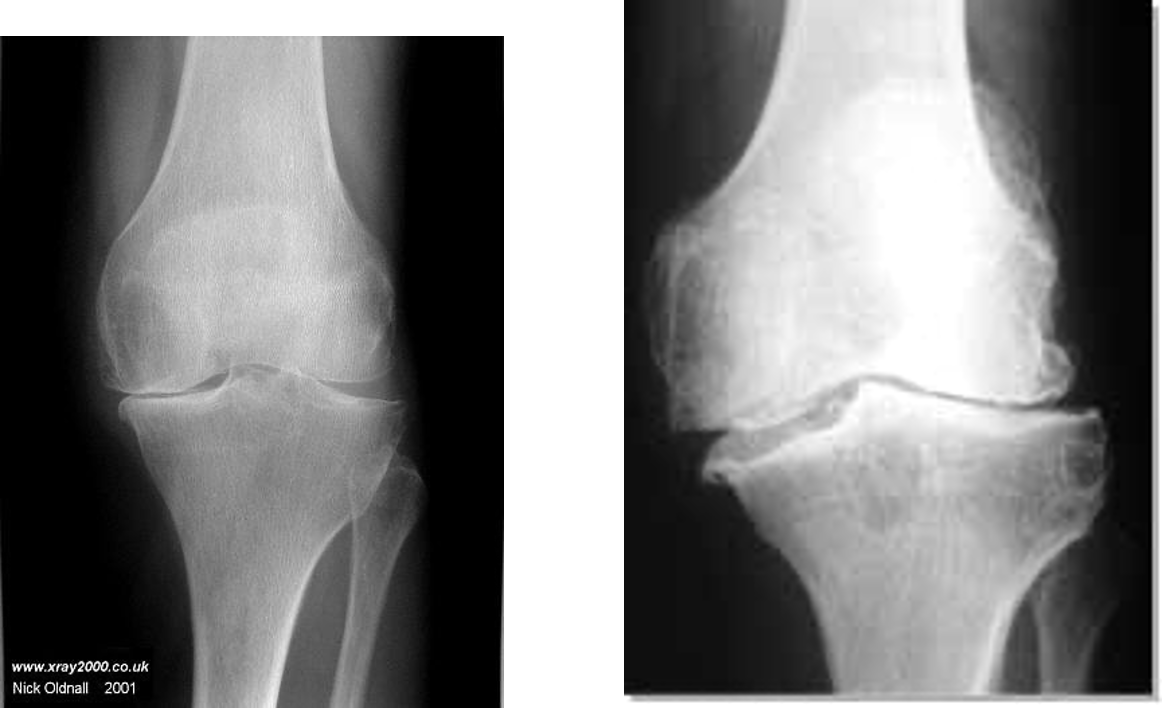
what is this?
knee DJD
what view are tibial plateau fractures best seen on?
AP
what is bipartite patella?
normal variant that may appear to be a fx
forms when portion of patella does not completely heal along bony edges of patella
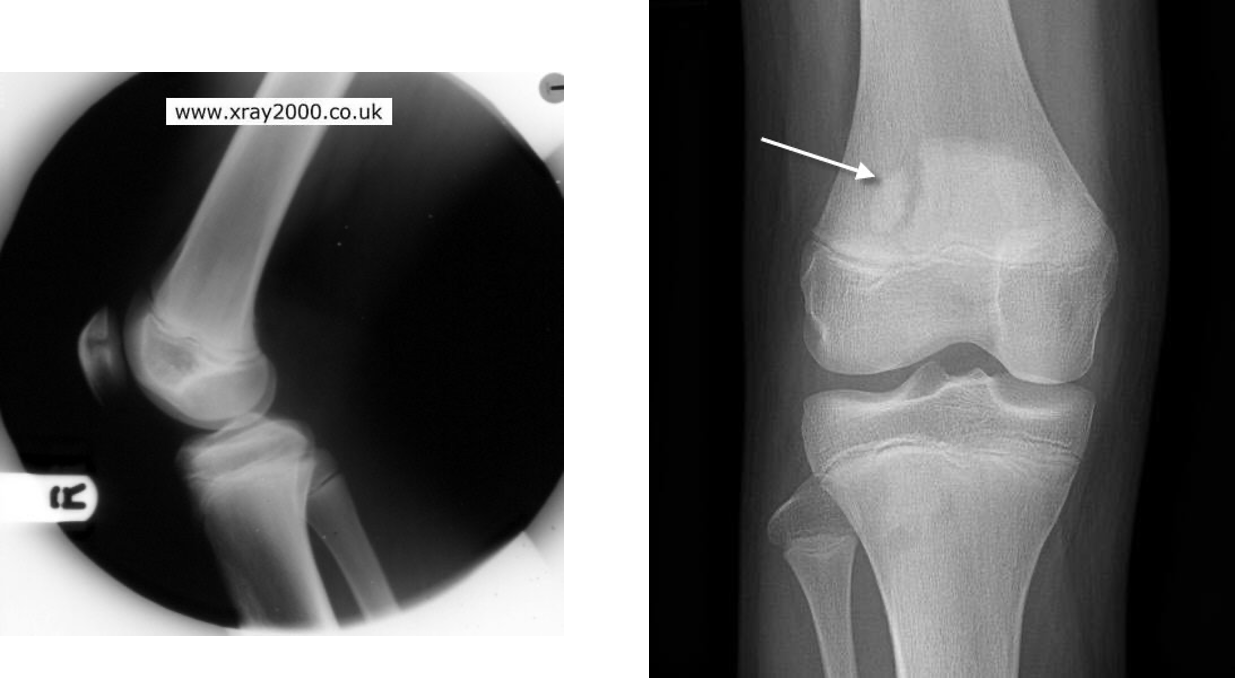
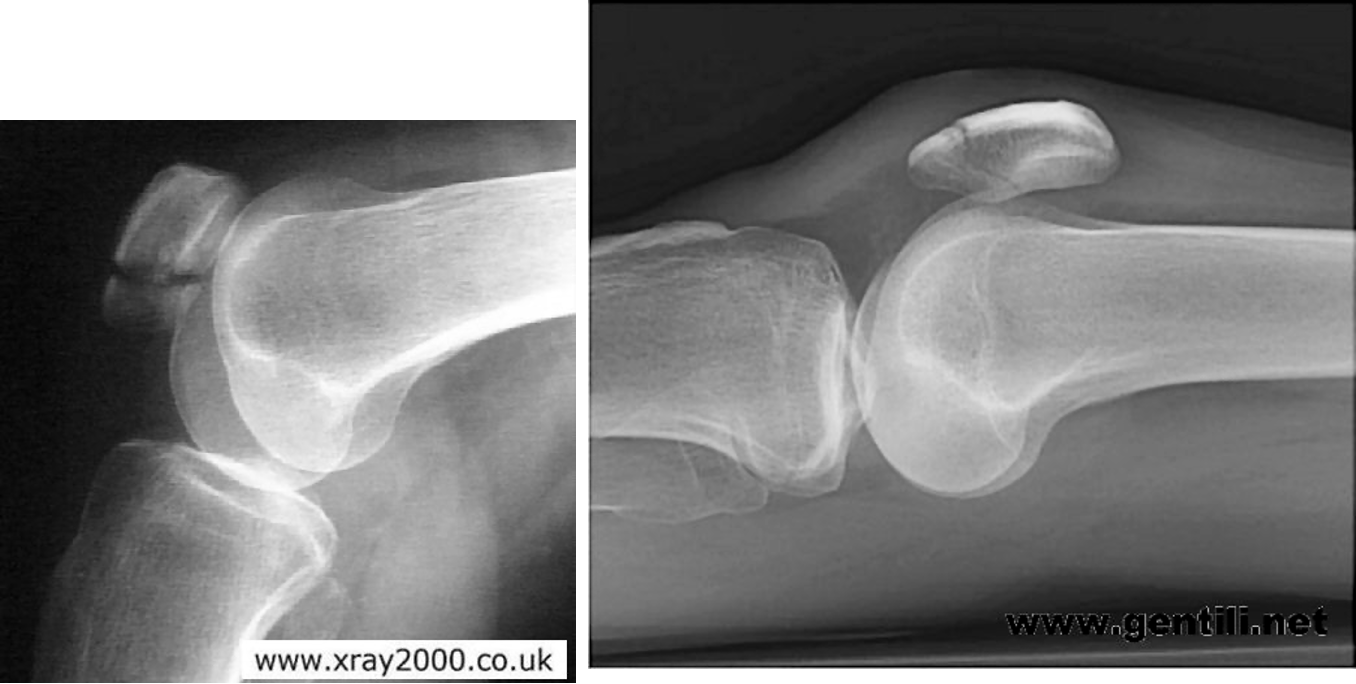
what is this?
patellar fracture
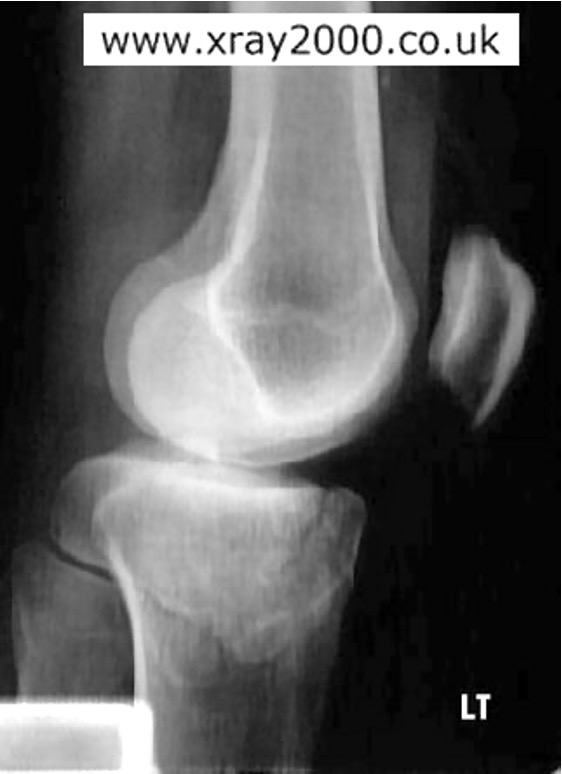
what is this?
tibial plateau fx
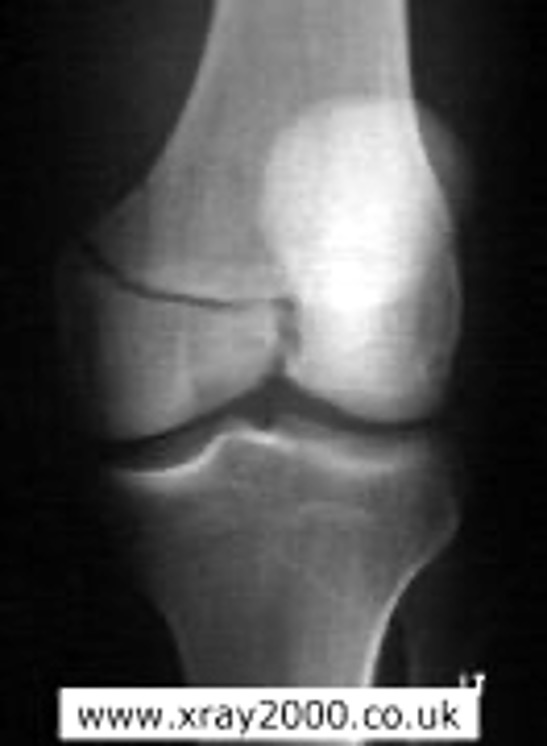
what is this?
supracondylar fx of femur
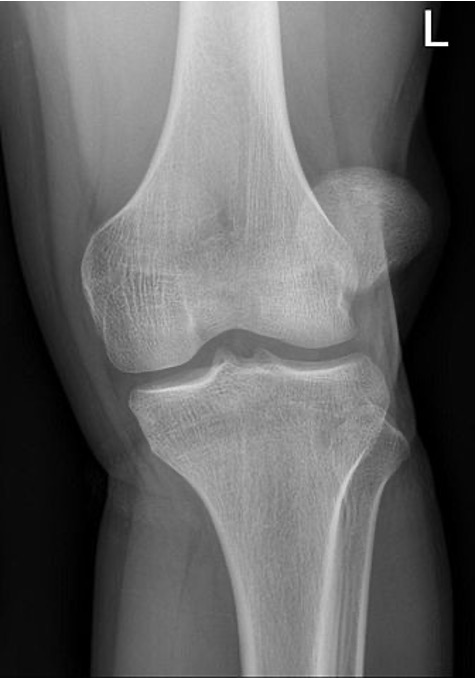
what is this?
dislocated patella
What is giant cell tumor?
benign tumor that commonly occurs in knee, often proximal to tibia
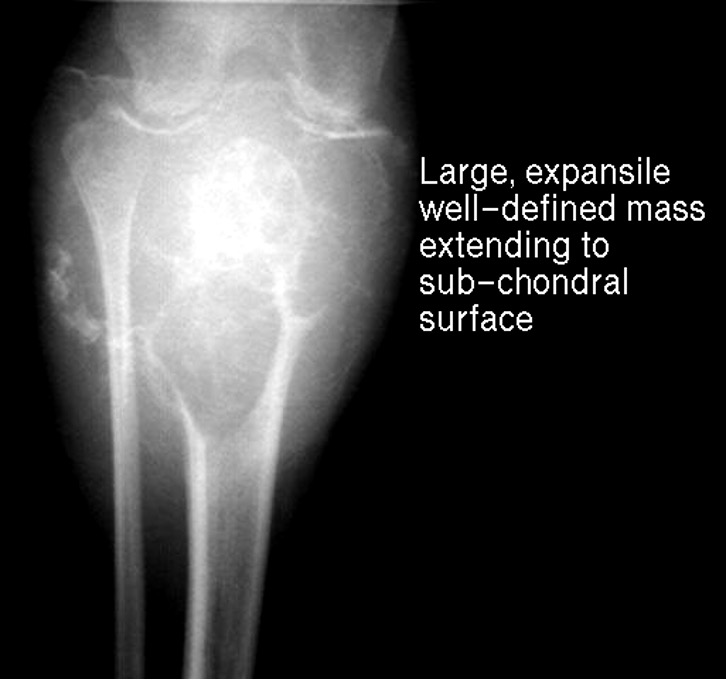
Where are spiral fx common to?
tibia- often assoc. fibula fx
How does ankle effusion appear?
anterior fat line in front of joint space on lateral view
what do the most common ankle fractures involve?
lateral or medial malleolus
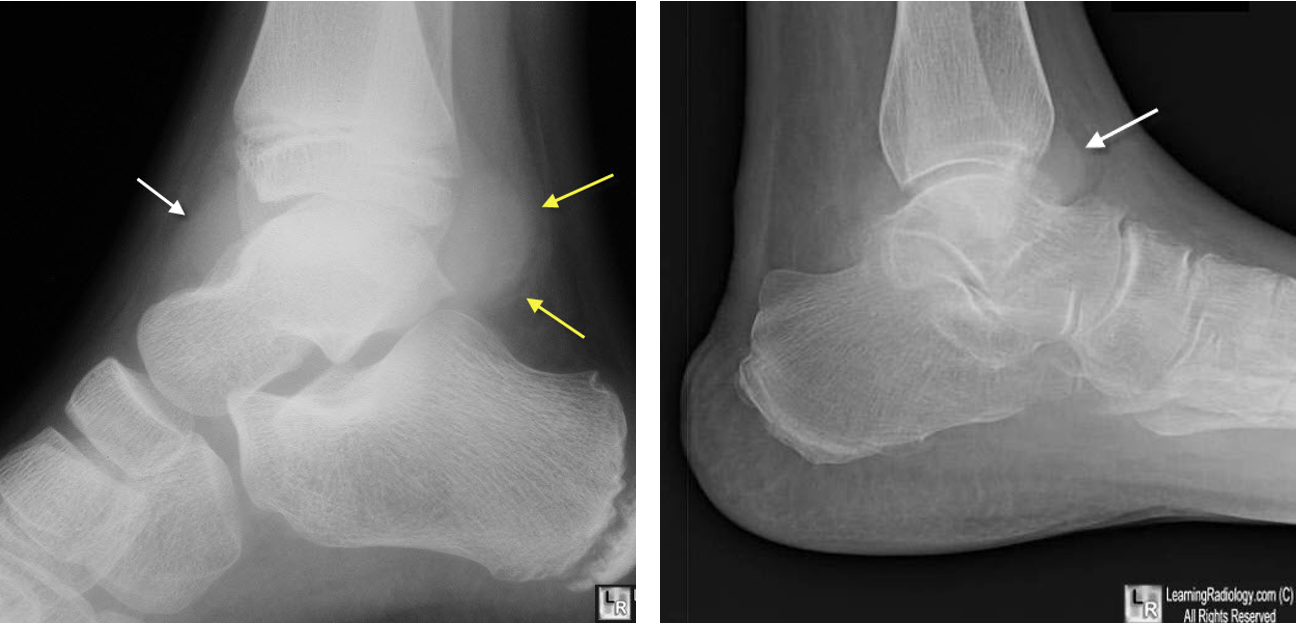
what is this?
ankle effusion
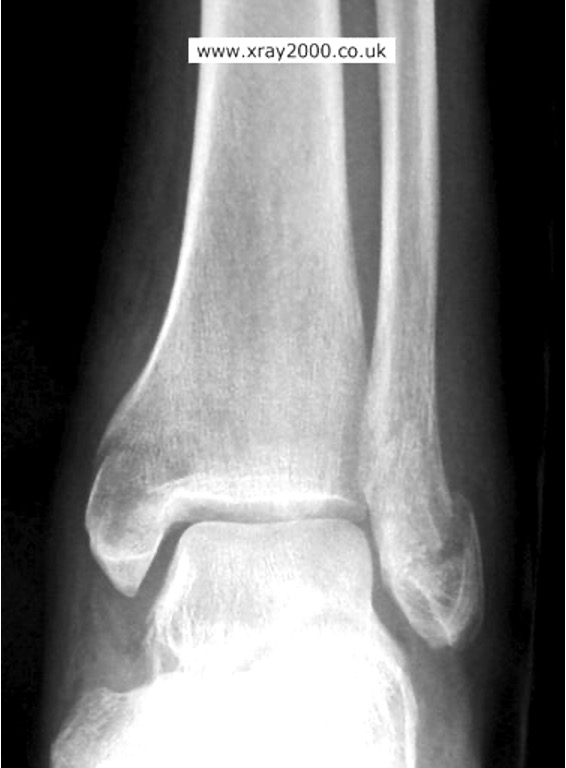
what is this?
bimalleolar fx
What are growth arrest lines/ Harris line (HL)?
due to period of arrested growth= perhaps sickness or malnutrition
occur in distal tibia
appear as radiopaque transverse line in metaphysis of long bones, indicator reflecting stress conditions such as dz or malnutrition
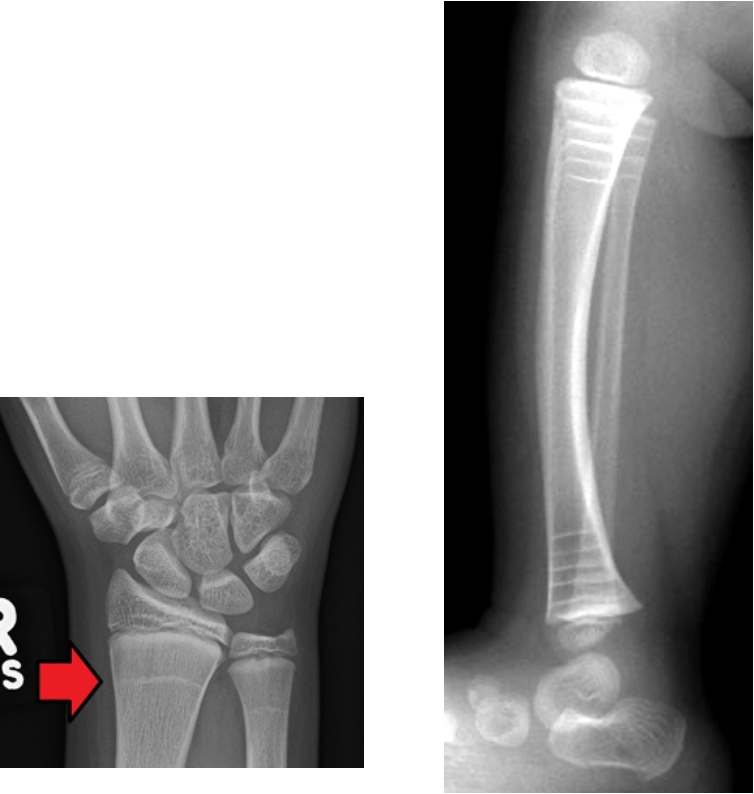
What is enostoses / bone islands?
common benign sclerotic bone lesions
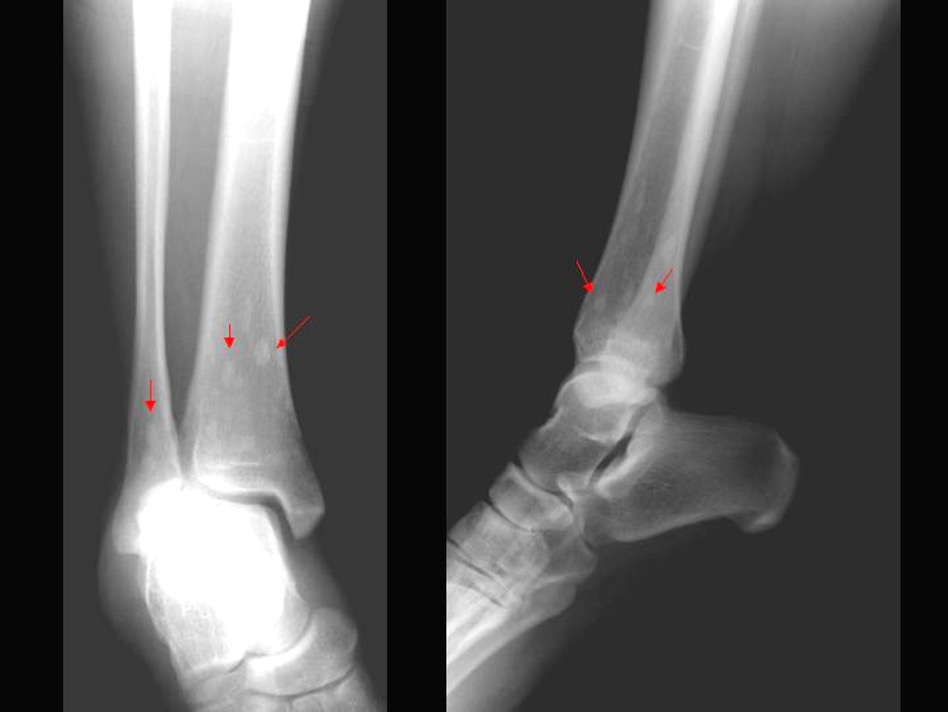
what is needed for suspected calcaneal fx?
calcaneal view
what is talar fx?
always involves neck of talus; high impact such as MVA
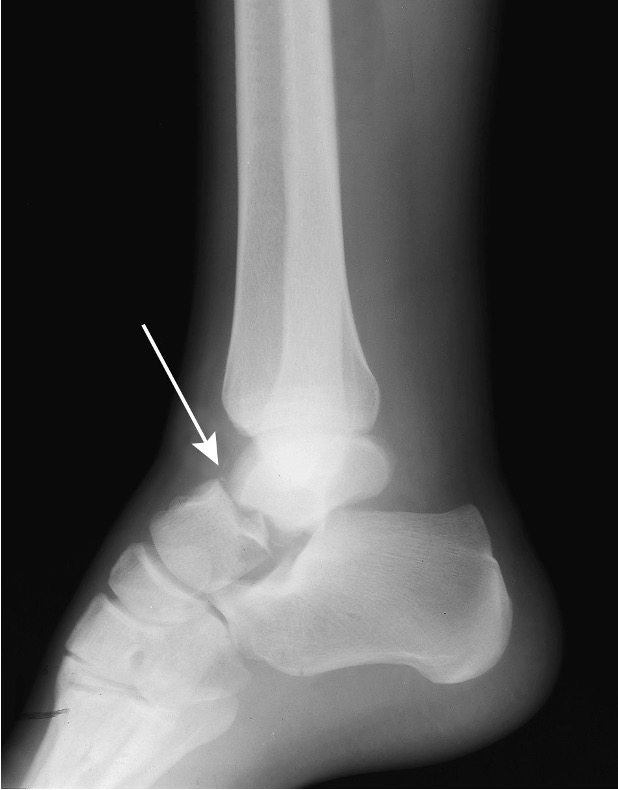
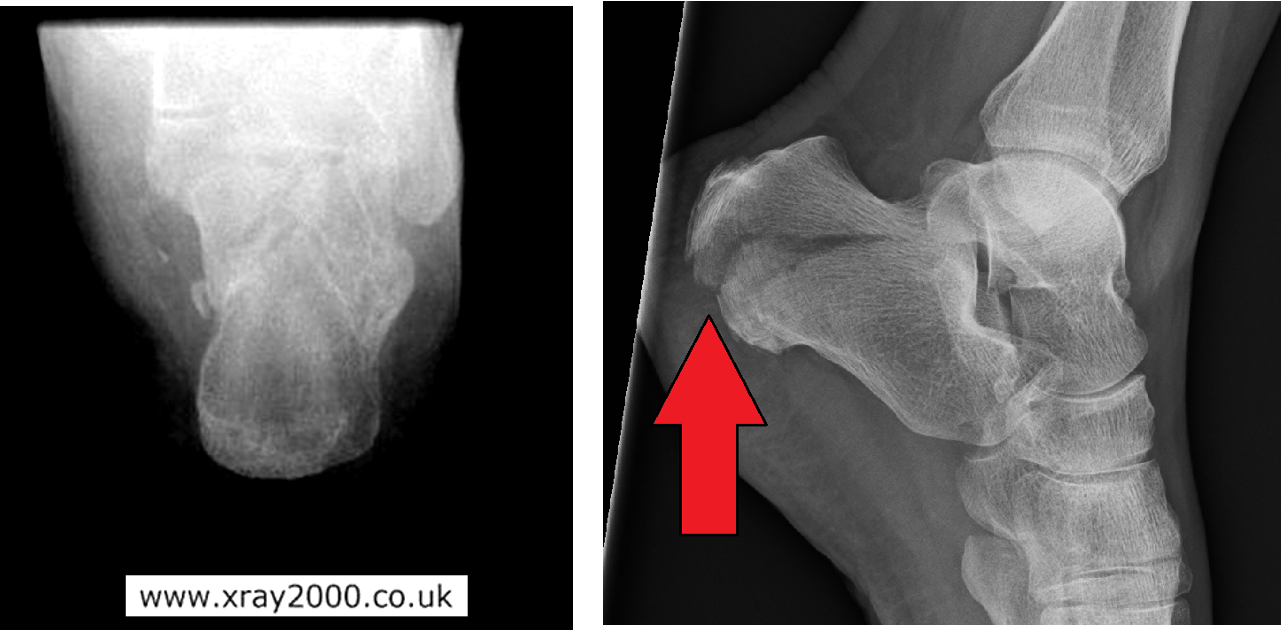
what is this?
calcaneal fx
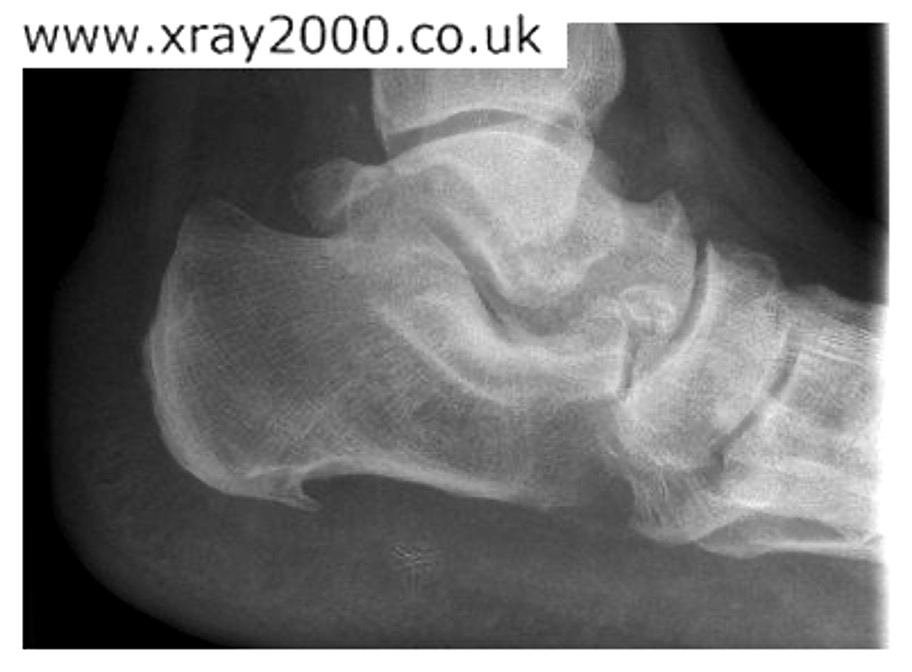
what is this?
calcaneal spur (heel spur)
what is jones fx?
fx to base of 5th metatarsal
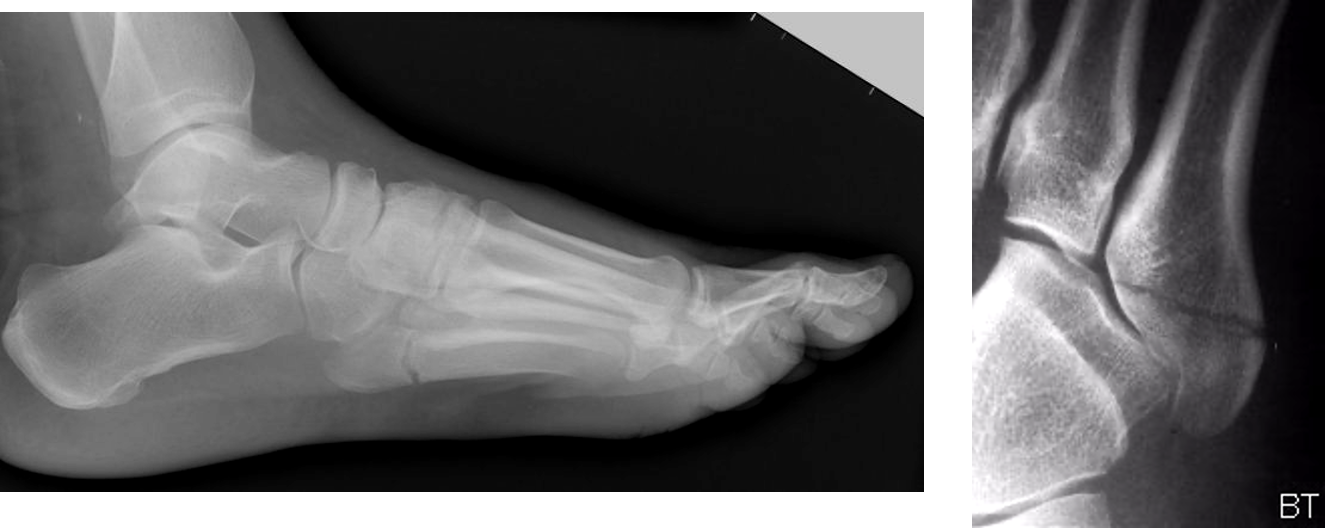
what is lisfranc fracture?
fx of 2nd, 3rd, 4th, and/or 5th MT w/ lateral dislocation
MOI: foot caught in stirrup
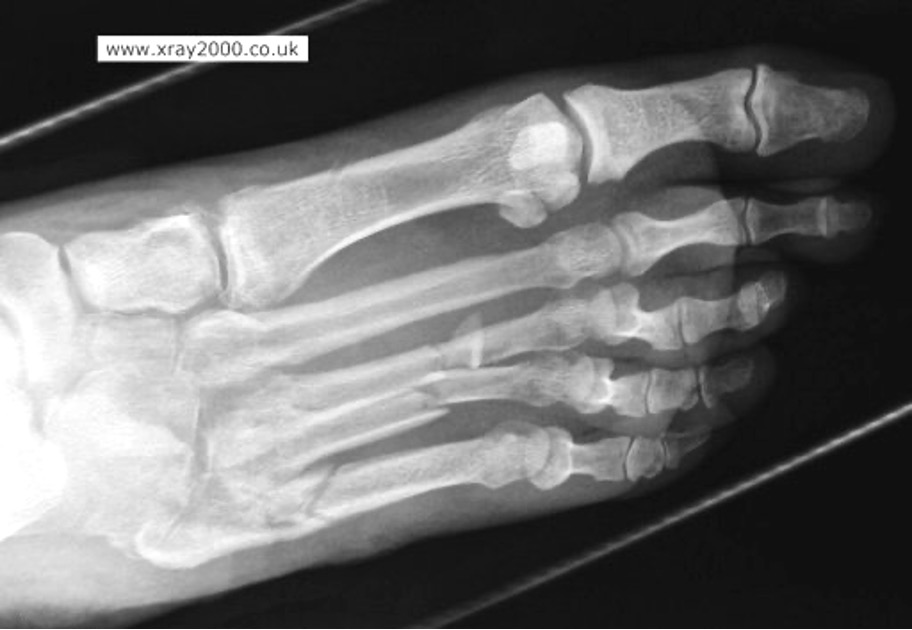
what is march fracture?
stress fracture of 2nd, 3rd, or 4th MT
seen in new recruits, athletes, dancers
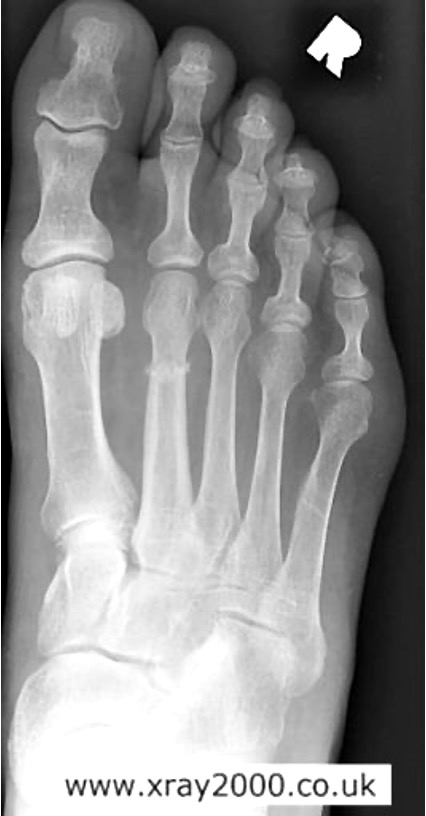
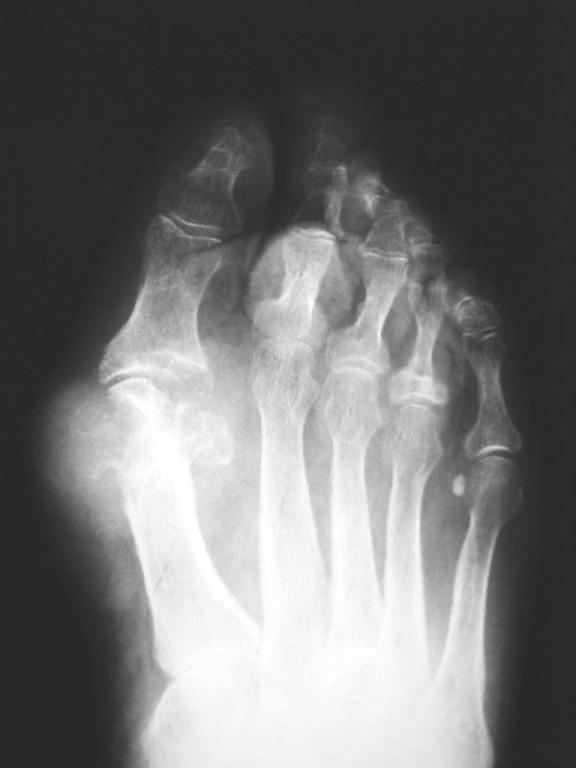
What is this?
gout- usually involves 1st MCP joint

what is this?
osteomyelitis
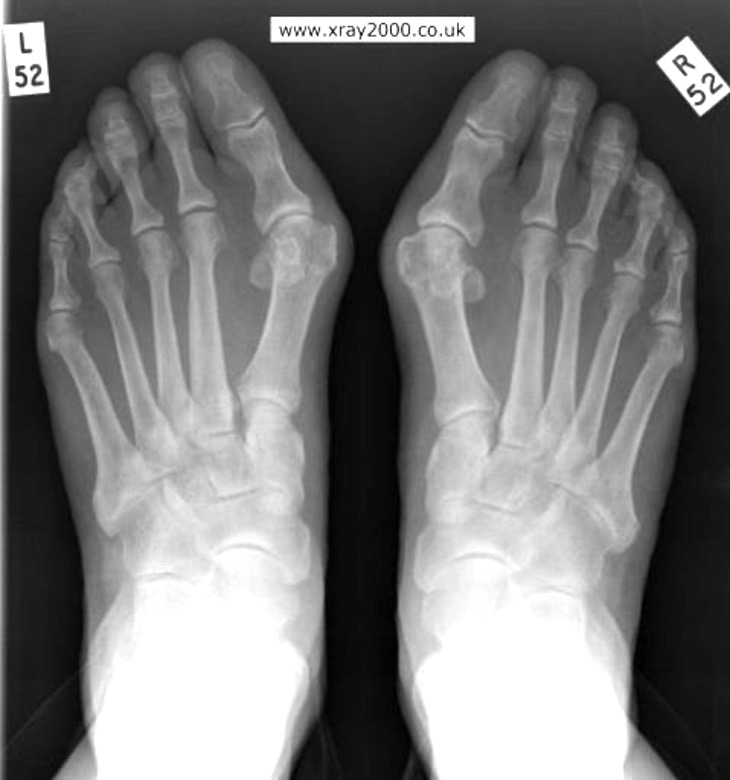
what is this?
bunions - hallux valgus